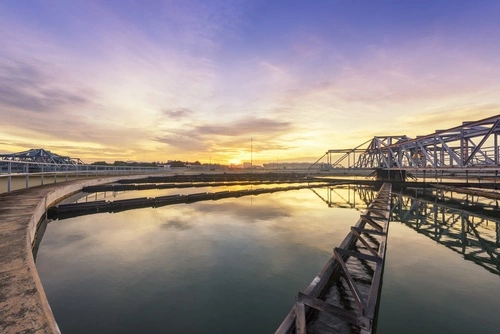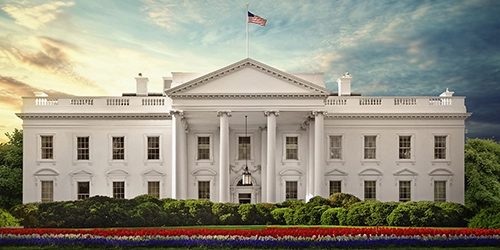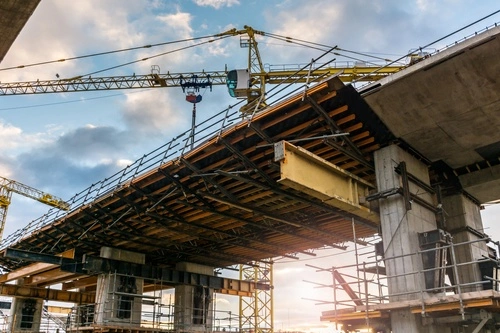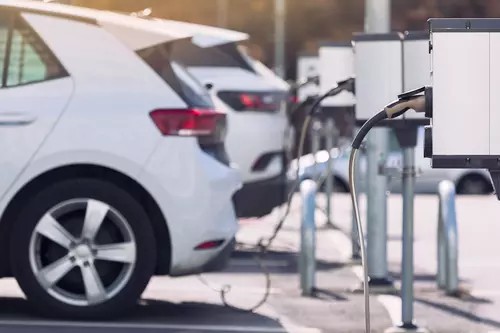Today, the United States Department of Transportation (U.S. DOT) issued an Interim Final Rule (IFR) entitled “Disadvantaged Business Enterprise Program and Disadvantaged Business Enterprise in Airports Concessions Program Implementation Modifications,” updating the requirements for its Disadvantaged Business Enterprise (DBE) Program as set forth in 49 C.F.R. Part 26. In addition, today the U.S. DOT’s Office of Civil Rights issued guidance regarding the IFR ...
The National Electric Vehicle Infrastructure (NEVI) Formula Program (the “NEVI Program”) was established by the Infrastructure Investment and Jobs Act (IIJA), Public Law 117-58 and was authorized under paragraph (2) under the Highway Infrastructure Program heading in title VIII of division J of the IIJA. The NEVI Program provides $5 billion of funding to States to deploy electric vehicle (EV) charging infrastructure and establish an interconnected network to facilitate data collection, access, and reliability. Although States are required to prioritize the allocated funding to infrastructure acquired or installed along designated EV Alternative Fuel Corridors (AFCs), any remaining funding may be used for EV charging infrastructure on any public road or in other publicly accessible locations when the State determines and the Secretary certifies that AFCs in a State are fully built out ...
The U.S. Environmental Protection Agency (EPA) has updated the federal requirements for the Water Infrastructure Finance and Innovation Act (WIFIA) Program through more than a dozen changes to the WIFIA Borrower Guide to Federal Requirements (Borrower Guide) and the WIFIA Specification Package and Bid Contract Language (Bid Contract Language). While some changes are minor, others will likely have major impacts on project owners and developers ...
In light of recent Executive Orders issued by President Trump concerning tariffs, countries around the world—including the United States—have been forced to reassess existing trade and contractual frameworks. The construction industry in particular faces heightened uncertainty due to the risk of disruption of project timelines and budgets.
In an article for Nossaman’s California Water Views – 2025 Outlook, we examine how construction contracts should proactively address tariff-related risks, especially through the careful drafting of force majeure provisions ...
Founded in 1852, the American Society of Civil Engineers (ASCE) is the country’s oldest and largest civil engineering organization. Since 1998, the ASCE has issued a quadrennial assessment of the U.S.’s infrastructure networks known as the Report Card for America’s Infrastructure. The Report Card uses an A to F grading system and examines the country’s current infrastructure conditions and needs, assigning grades and making recommendations on how to improve those grades ...
March 10, 2025 Update (Policy Rescission)
This afternoon (March 10, 2025), Secretary Duffy rescinded policy memoranda issued by the Federal Highway Administration during the Biden administration. The now rescinded memoranda each bore the name “Policy on Using Bipartisan Infrastructure Law Resources to Build a Better America”—the first was issued on December 16, 2021 and the second on February 23, 2023. The 2021 memorandum, in particular, attracted significant attention throughout the industry when it stated that federal transportation funding “should be used to ...
February 26, 2025 Update
As discussed in our February 4 and 10, 2025, updates, U.S. District Court Judge Loren AliKhan issued on February 3, 2025, a TRO prohibiting the Trump Administration “from implementing, giving effect to, or reinstating under a different name OMB memorandum M-25-13 freezing all federal financial assistance under open awards.” On February 25, 2025, Judge AliKhan granted a preliminary injunction, ordering as follows:
- Enjoining the Trump Administration “from implementing, giving effect to, or reinstating under a different name the unilateral ...
On January 14, 2025, the Federal Highway Administration (FHWA) announced a new final rule to end its longstanding waiver of Buy America requirements for “manufactured products” used in Federal-aid highway projects.
By way of background, FHWA’s Buy America statute was enacted in 1983 and required FHWA to ensure that all federally funded projects use only steel, iron, and manufactured products that are produced in the United States. However, at the time, FHWA determined that it would be in the public interest to waive the Buy America requirements for manufactured products ...
The Government Accountability Office’s (GAO) fiscal year 2024 report on federal bid protests includes useful insights into federal procurement trends that can help state and local government agencies mitigate bid protest risks. Among other findings, the GAO identified unreasonable technical evaluation, flawed selection decision, and unreasonable cost or price evaluation as the three most prevalent reasons for sustained protests. Examining the cases identified by the GAO for each of those reasons can help public owners understand procurement practice pitfalls that ...
The Bipartisan Infrastructure Law established the National Electric Vehicle Infrastructure (NEVI) formula program in an effort to jumpstart the development of electric vehicle (EV) charging networks. To support that endeavor, the NEVI formula program allocates $5 billion, over five years, to states to deploy publicly accessible electric vehicle charging infrastructure (EVCI) along an interconnected national network. There are three particularly noteworthy elements of the NEVI formula program ...
Nossaman’s 30-plus infrastructure attorneys offer clients, colleagues, strategic partners and industry media a wealth of practical experience, insider insight and thoughtful analysis here on Infra Insight. We blog about what we know best, from industry-leading procurements to local and national policy developments that affect the market and our clients.
Stay Connected
 RSS Feed
RSS Feed
Categories
- Airports
- Alternative Project Delivery
- Bridges
- California Environmental Quality Act
- Cybersecurity
- Design-Build
- Financing
- High-Speed Rail
- Job Opening
- Legislation
- News
- P3s
- Policy
- Ports
- Rail and Transit
- Social Infrastructure
- Tollroads/ Turnpikes/ Managed Lanes
- Transportation Infrastructure
- Tunnels
- Water









